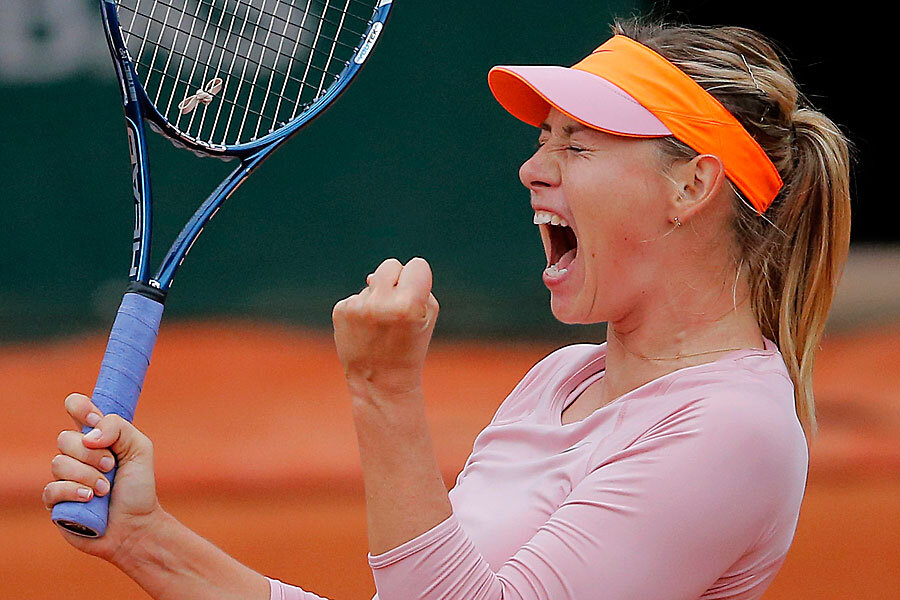Samantha Stosur fades as Maria Sharapova shines at French Open
Loading...
| Paris
It might seem unlikely for a player to go from merely mediocre to nearly perfect right smack-dab in the middle of a match, yet that's what Maria Sharapova did in the French Open's fourth round.
Shouting and shaking her fists after plenty of points, 2012 champion Sharapova reeled off the last nine games to engineer quite a comeback and beat Samantha Stosur 3-6, 6-4, 6-0 Sunday to reach the quarterfinals at Roland Garros.
"How quickly things can turn," Stosur said. "I don't think I did much wrong. It was just one of those things. You miss a ball, she hits a good serve next one, (you) play a sloppy game, and all of a sudden, you're even — and she runs away with it."
After dropping the first set and trailing 4-3 in the second, Sharapova did not allow the 19th-seeded Stosur to win another game. Sharapova took control by taking 22 of 25 points in one stretch against Stosur, who won the 2011 U.S. Open and got to the final at the 2010 French Open.
"There are so many emotions you go through in a match, and then there are always moments where you feel a bit of a momentum change," the seventh-seeded Sharapova said. "I think you feel a lot more as a player than maybe a spectator."
Sharapova is trying to get to her third consecutive final in Paris. She completed a career Grand Slam with her title two years ago, then was the runner-up to Serena Williams in 2013.
When this year's tournament draw came out, the match everyone was pointing to in the women's bracket was a potential rematch between Sharapova and Williams in the quarterfinals.
So much for that. The No. 1-seeded Williams was surprisingly beaten 6-2, 6-2 in the second round by 35th-ranked Garbine Muguruza, a 20-year-old from Spain.
And now Sharapova's quarterfinal opponent will be Muguruza.
"Of course now I'm very happy what I did," Muguruza said Sunday after getting to the final eight at a Grand Slam tournament for the first time by eliminating French wild-card entry Pauline Parmentier 6-4, 6-2. "But I want to continue."
The other women's quarterfinal set up Sunday was No. 14 Carla Suarez Navarro of Spain against No. 18 Eugenie Bouchard of Canada. Suarez Navarro beat Ajla Tomljanovic of Croatia 6-3, 6-3, while Bouchard needed less than an hour to get past No. 8 Angelique Kerber of Germany 6-1, 6-2.
In women's fourth-round matches Monday on the other half of the draw, it will be No. 4 Simona Halep against No. 15 Sloane Stephens, No. 6 Jelena Jankovic against No. 10 Sara Errani, 2009 French Open champion Svetlana Kuznetsova against No. 23 Lucie Safarova, and No. 23 Andrea Petkovic against 148th-ranked qualifier Kiki Bertens.
Kuznetsova and Sharapova are the only past major champions left.
There's little doubt who the favorite is at this point — Sharapova, particularly if she keeps playing the way she did in the second half of her victory over Stosur.
"I love competing. That's one of the best parts of the sport. Gives me the greatest pleasure, and I don't think anything else in life can give me that," Sharapova said. "I'm using that to my advantage while I can."
___
Follow Howard Fendrich on Twitter at http://twitter.com/HowardFendrich







